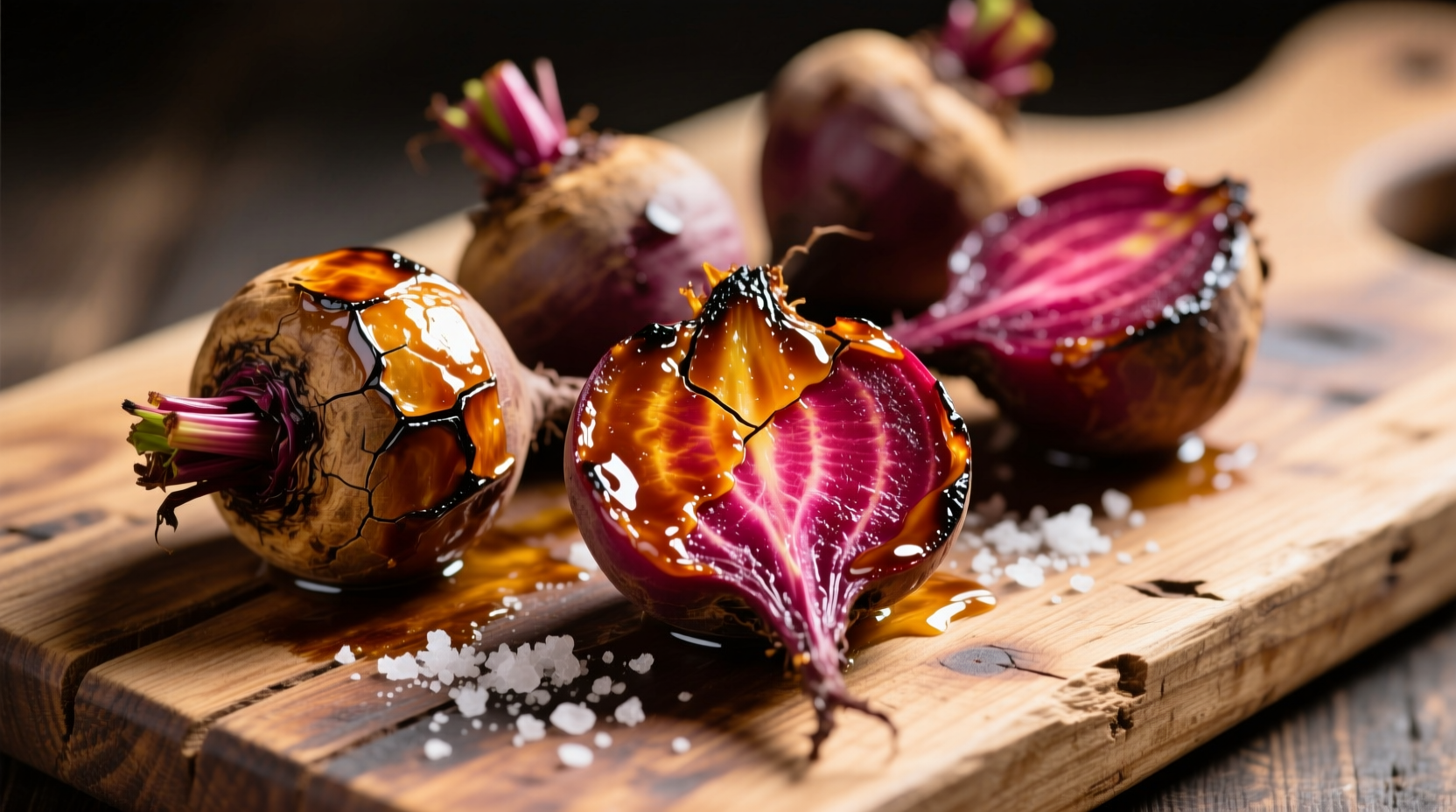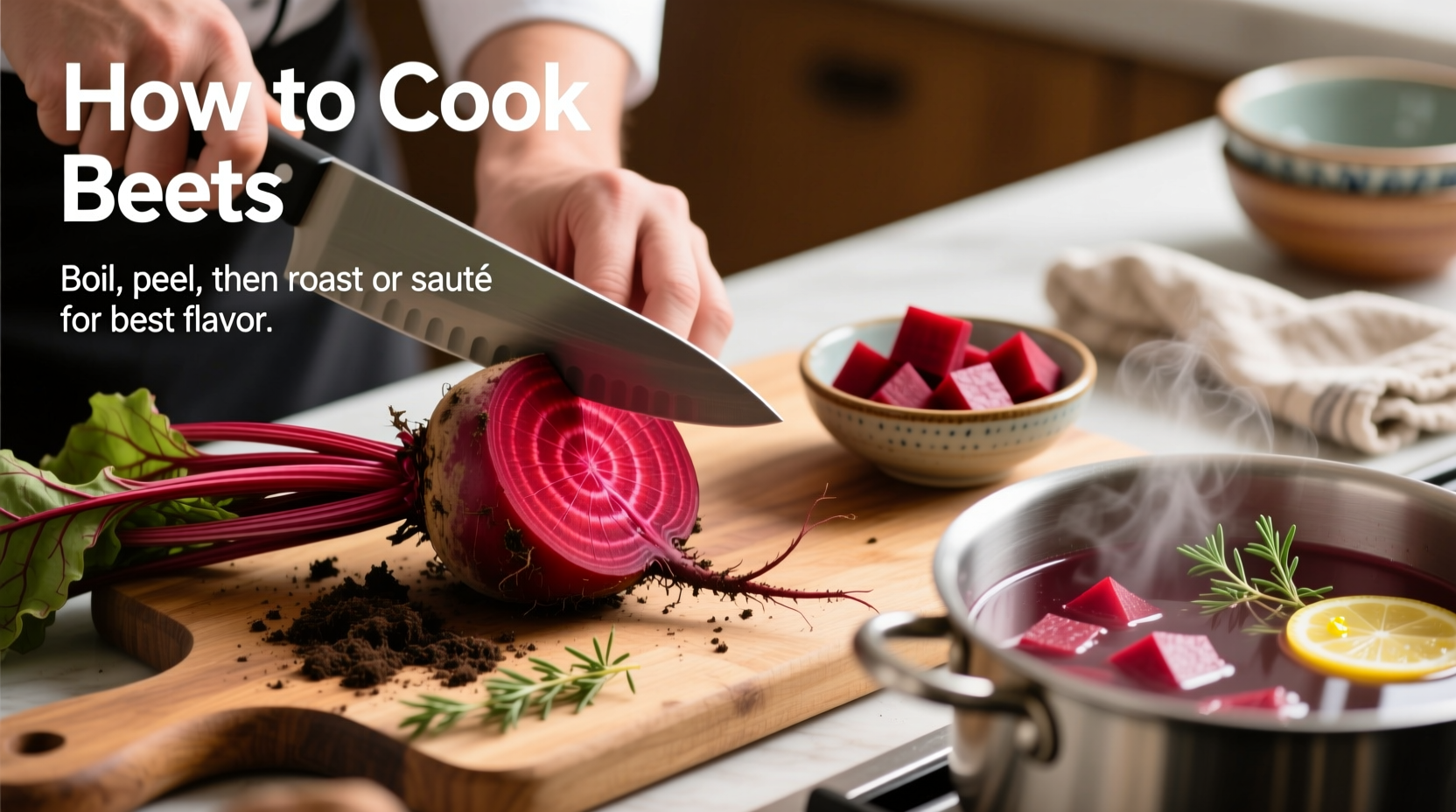Discover exactly how to cook beets to tender perfection every time with our comprehensive guide. Whether you're a first-time beet cook or looking to refine your technique, you'll learn four reliable methods with precise timing, professional tips to prevent staining, and expert guidance on selecting the best beets for your cooking needs. This guide delivers actionable steps that transform this earthy root vegetable into a vibrant, flavorful addition to your meals.
Why Proper Beet Cooking Matters
Beets contain betalains, the pigments responsible for their vibrant color and many health benefits. Cooking them properly preserves both nutritional value and flavor while minimizing the dreaded kitchen stains. According to USDA food safety guidelines, root vegetables like beets should reach an internal temperature of 185°F (85°C) to ensure they're fully cooked while maintaining optimal texture.
Choosing the Right Beets for Cooking
Select firm beets with smooth skin and deep color. Smaller beets (1-3 inches in diameter) typically cook faster and have a more tender texture than larger ones. The USDA Agricultural Research Service confirms that smaller beets contain higher concentrations of beneficial compounds like betanin. Avoid beets with soft spots, cracks, or shriveled skin, which indicate age and potential dryness after cooking.
| Cooking Method | Prep Time | Cooking Time | Best For |
|---|---|---|---|
| Roasting | 10 minutes | 45-60 minutes | Concentrated sweetness, caramelized edges |
| Boiling | 5 minutes | 30-45 minutes | Quick preparation, uniform texture |
| Steaming | 5 minutes | 25-35 minutes | Nutrient retention, firm texture |
| Pressure Cooking | 10 minutes | 15-20 minutes | Fastest method, minimal cleanup |
Step-by-Step: Roasting Beets (Best Flavor Method)
Roasting concentrates beets' natural sugars, creating the deepest flavor profile. Professional chefs prefer this method for salads and side dishes where flavor complexity matters most.
- Preheat oven to 400°F (200°C)
- Wash beets thoroughly under cold water, scrubbing gently with a vegetable brush
- Trim tops to 1 inch and roots to 1/2 inch to prevent bleeding during cooking
- Wrap each beet individually in aluminum foil with 1 teaspoon of olive oil and a pinch of salt
- Place on baking sheet and roast for 45-60 minutes (depending on size)
- Test for doneness by piercing with a fork—should slide in with slight resistance
- Cool for 10 minutes before peeling
Pro tip: Save time by roasting multiple beets at once and storing extras for up to 5 days. The National Center for Home Food Preservation recommends refrigerating cooked beets in airtight containers with a small amount of cooking liquid to maintain moisture.

Boiling Beets (Quickest Traditional Method)
Boiling works well when you need cooked beets quickly for salads or purees. This method requires attention to water temperature to prevent cracking.
- Place beets in a large pot and cover with cold water by 2 inches
- Add 1 tablespoon of vinegar or lemon juice to help preserve color
- Bring to a gentle boil, then reduce heat to maintain a simmer
- Cook for 30-45 minutes until fork-tender
- Drain and rinse under cold water for 1-2 minutes
- Peel under running water using your fingers or a small knife
Avoid this common mistake: Don't skip the vinegar—it helps maintain the vibrant color by stabilizing the betalain pigments. Research from the USDA National Agricultural Library shows acidic environments help preserve beet pigments during cooking.
Steaming Beets (Nutrient-Preserving Method)
Steaming preserves more water-soluble nutrients than boiling while maintaining firm texture ideal for slicing.
- Fill a pot with 1-2 inches of water and bring to a boil
- Place beets in a steamer basket, leaving space between them
- Cover and steam for 25-35 minutes until tender
- Test doneness by inserting a thin knife—should meet slight resistance
- Cool slightly before peeling
Pressure Cooking Beets (Fastest Method)
For time-pressed cooks, an electric pressure cooker delivers perfectly cooked beets in under 20 minutes.
- Add 1 cup of water to the pressure cooker
- Place beets on the trivet, leaving space between them
- Seal and cook on high pressure for 15-20 minutes (15 for small beets, 20 for large)
- Natural release pressure for 10 minutes before quick-releasing
- Peel under cold running water
Essential Tips for Cooking Beets Successfully
Follow these professional techniques to avoid common pitfalls when learning how to cook beets:
- Prevent Staining: Wear gloves during preparation and use glass or stainless steel cutting boards (avoid wood which absorbs color)
- Peeling Hack: After cooking, the skins should slide off easily with your fingers—no knife needed
- Color Preservation: Always add acid (vinegar or lemon juice) to cooking water when boiling
- Flavor Enhancement: Roast with orange zest or herbs like thyme for complementary flavors
- Safety Note: Never wrap beets tightly in foil when roasting—leave room for steam to escape to prevent explosions
How to Store Cooked Beets
Proper storage extends the life of your cooked beets while maintaining quality:
- Refrigerate in airtight containers with a small amount of cooking liquid for up to 5 days
- Freeze peeled, cooked beets in single layers before transferring to freezer bags for up to 10 months
- Never store beets with their greens attached—the greens draw moisture from the roots
What to Do When Beets Aren't Cooking Properly
Encountering issues? Here's how to troubleshoot common beet cooking problems:
- Beets are still hard: Return to heat for additional 5-10 minute increments, testing frequently
- Excessive bleeding: You likely trimmed too much off the tops or roots before cooking
- Dull color: Add acid to cooking water next time or try roasting instead of boiling
- Mushy texture: Overcooking—reduce time by 5-10 minutes next batch
Delicious Ways to Use Your Perfectly Cooked Beets
Transform your cooked beets into impressive dishes:
- Toss with citrus vinaigrette and goat cheese for a classic salad
- Slice thinly for vibrant carpaccio with walnuts and arugula
- Puree with Greek yogurt for a stunning pink dip
- Add to grain bowls with roasted vegetables and tahini dressing
- Layer in sandwiches for color and earthy sweetness











 浙公网安备
33010002000092号
浙公网安备
33010002000092号 浙B2-20120091-4
浙B2-20120091-4